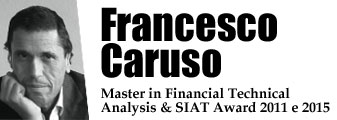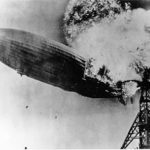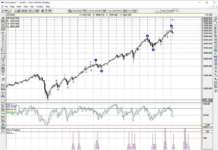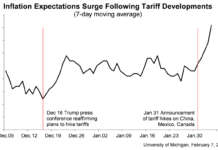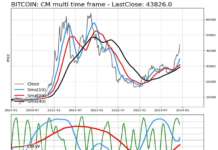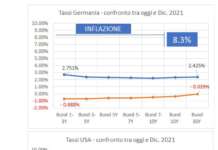Tempo di mercati che non fanno nulla di nuovo, ma lo fanno con grande emotività. Il Usd ha reagito perfettamente sui livelli indicati ma per ampliare il suo recupero deve rompere 1.2750. L’oro ha tenuto il 1155 e si sta riportando sui massimi (situazione interessante da seguire…). I bonds salgono e i tassi scendono, su timori di deflazione e sulle dichiarazioni delle banche centrali. Le borse stagnano. Siccome adoro leggere e – se trovo cose interessanti – mi piace condividerle con voi, vi propongo qualcosa di molto tecnico, esoterico, con i link per gli approfondimenti.
La prima nota riguarda l'”Hindenburg Omen“. Trattasi di segnale creato da un matematico cieco, che notò che anticipava sempre declini forti. Senza commenti, vi rimando alla lettura di wikipedia sull’argomento: http://en.wikipedia.org/wiki/Hindenburg_Omen
Ecco quello che dice Richard Russell (www.dowtheoryletters.com) sul tema: “The August 14-15 Wall Street Journal surprised me by including a piece about the “Hindenburg Omen.” This is the invention of a brilliant mathematician that I used to exchange services with. His name was James Miekka, and he did all his calculation in his head. Miekka did this because he was totally blind. Jim discovered that a certain combination of market numbers led to crashes. Another buddy of mine, the late Kennedy Gammage of La Jolla, named the Miekka warning combination after the 1937 crash and burning of the Hindenburg zeppelin. Calculation of the Omen starts with a day in which the daily number of new highs and new lows are both greater than 2.5% of the total issues traded — and then the Omen involves a number of other technical criteria. Miekka’s system forecasts a crash in September. “. La mia opinione: il 12 e il 16 Agosto si sono verificati due setup di questo segnale, ma sarebbe uno stupore enorme se il “Wall Street Journal”, che non mi risulti (come peraltro quasi tutti i media) abbia mai previsto in anticipo né un crash né una recessione, azzeccasse il timing stavolta.
Ancora una considerazione di Russell sull’indicatore On Balance Volume: “As I see it, the top we are witnessing began forming in October 2007 and is still in the process of formation. This makes it the greatest top, in duration, in history. Fantastic.
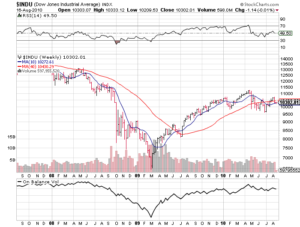
Speaking of on-balance-volume, this is the invention of my friend, the pioneering Joe Granville, who I have known and traded services with since 1960. Joe insists that volume precedes price. Joe has done a tremendous amount of work on his volume studies plus his studies of new highs and lows on the NYSE.
New highs on the NYSE topped out on April 26, 2010 at 674. Joe is convinced that was the high for the market, and once the high is put in, the market has nowhere to go but down. But it doesn’t have to go straight down, the market can meander down in its own way.
Here’s what Joe is saying in his latest report: “Between now and 2011, I expect the Dow to break the March 9, 2009 low of 6548.05. Once that happens, it puts the Dow in free fall with a limitless fall. What I see then is the worst decline in history, the reverse of this, the mother of all tops. Now there is no way the market can turn around and make new highs. I know that because I have the OBV numbers which all topped out in the recent March-April terminal leap.”
Ed ecco sotto il link dove Albert Edwards, Chief Strategist di SocGen (!!!) estrapola una visione che non è esattamente ottimista.
http://www.zerohedge.com/article/albert-edwards-sees-stocks-under-march-lows-bond-yield-go-below-2
Ed ecco, infine, la situazione del mercato leader con i miei indicatori, su base weekly e daily:
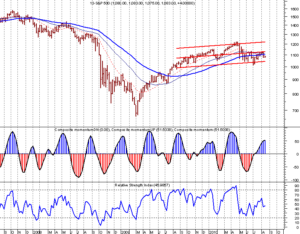
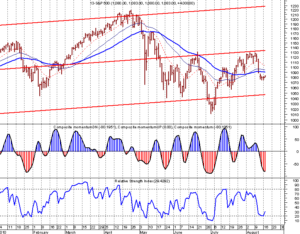
Le linee rosse sono la Standard Deviation a un anno. Come si vede, il Composite Momentum è in fase di top su base weekly ma in fase di minimo su base daily. Di solito, come spiega lo schema delle quattro strutture di inversione in basso, il momento migliore per uscire/vendere è quando l’indicatore di momentum, sull’arco temporale più corto, entra in sintonia con quello piu’ lungo: quindi, venendo al nostro “case study”, sul prossimo top di breve – che dovrebbe appunto essere tra ora e inizio Settembre. L’ultima parola ai mercati, che – ricordate – hanno sempre ragione e sono delle perfette macchine per deludere.
P.S.: grazie di cuore a tutti voi per le mail e per la comprensione sui miei tempi di risposta.
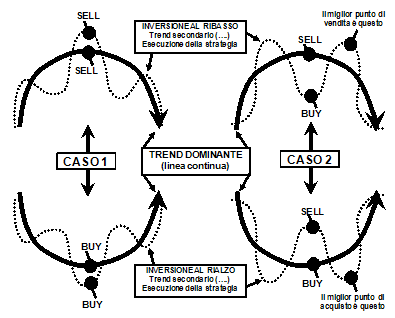
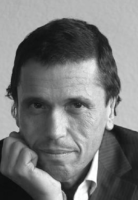
Sono il creatore del Composite Momentum e di numerosi altri modelli quantitativi e indicatori di analisi tecnica. CSTA (Certified SIAT Technical Analyst) e MFTA (Master of Financial and Technical Analysis), il livello più alto riconosciuto dall’associazione mondiale IFTA. Vincitore di premi, tra cui il John Brooks Award e due edizioni del SIAT Award, sono fondatore della Market Risk Management (marketrisk.it), società leader nei servizi di advisory indipendente (cicliemercati.it). Attualmente ricopro cariche istituzionali all’interno di IFTA e SIAT. Per chi fosse interessato qui c’è il mio profilo completo.
